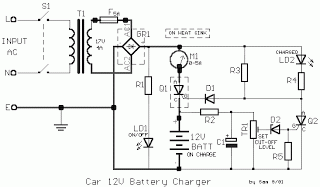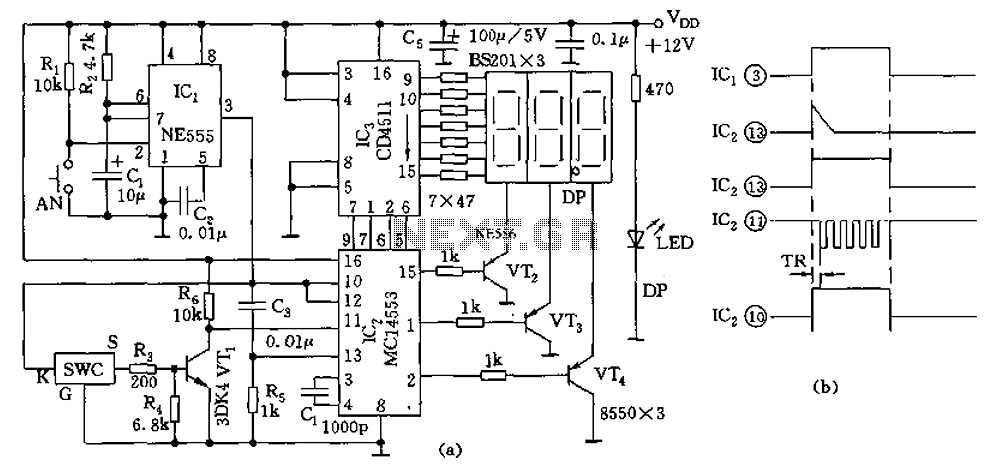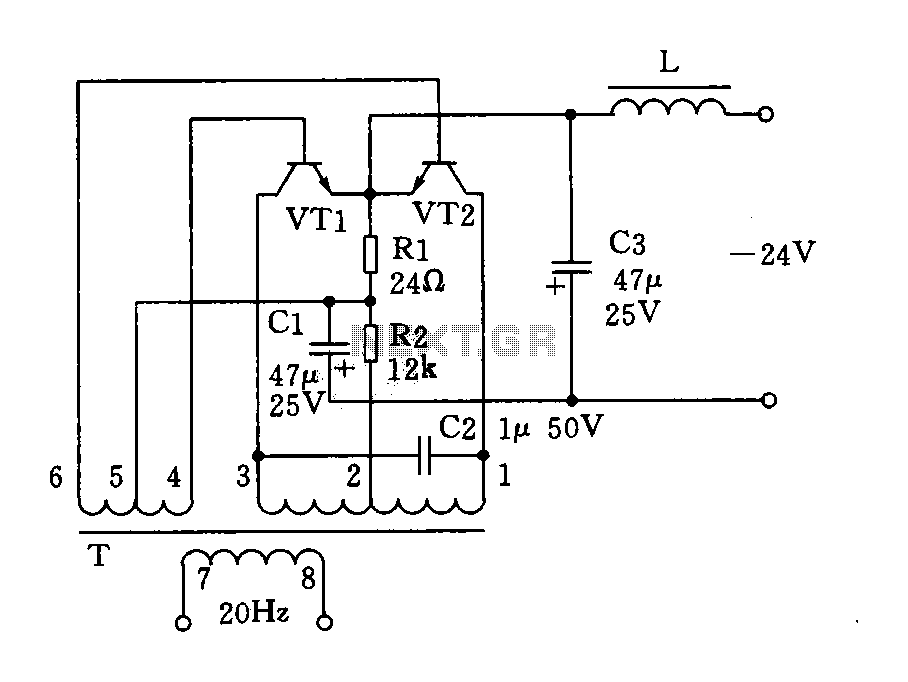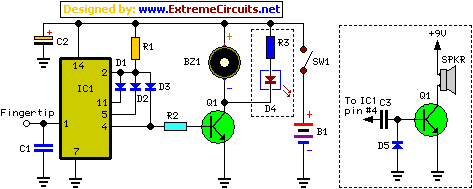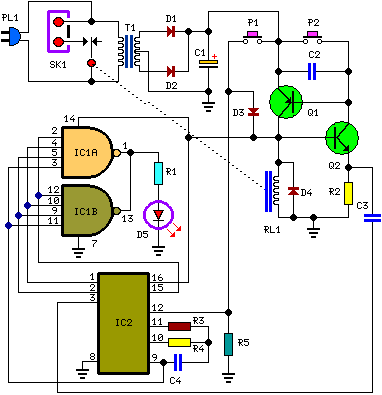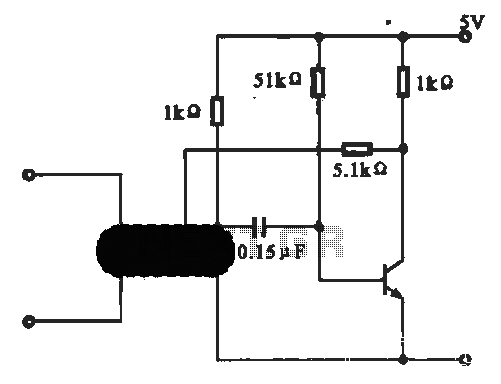
5-motor hexapod circuit

This circuit has a long history, originating from an idea by Rich Piotter and later refined by Wilf Rigter and Bruce Robinson. The final result does not include the necessary motor drivers, which are typically H-bridge based, but presents a high-level circuit. Rich Piotter initially shared this circuit in a post to the Yahoo BEAM group on September 25, 2000, identified as post #5955. Shortly thereafter, Wilf Rigter showcased his version in post #6020. Over the following year, Bruce Robinson made further simplifications, reducing the pin count and leading to the circuit diagram presented. This final iteration was introduced to the public indirectly through an announcement by "Sparky" Garvin in Yahoo groups post #19029.
This circuit represents a collaborative evolution of design ideas within the community, reflecting iterative enhancements that improve functionality and usability. The initial concept by Rich Piotter laid the groundwork for a circuit intended for robotic applications, particularly in the domain of BEAM robotics, which emphasizes minimalistic and efficient designs.
Wilf Rigter's contribution focused on refining the circuit to enhance its performance, likely addressing issues such as component count and overall complexity. The simplification process by Bruce Robinson further streamlined the design, making it more accessible for hobbyists and engineers alike. The reduction in pin count suggests a move towards a more compact and efficient circuit layout, which is crucial in applications where space and power efficiency are paramount.
Although the final schematic does not depict the motor drivers, it is essential to consider that H-bridge configurations are typically employed in such circuits to control the direction and speed of motors. An H-bridge allows for bidirectional control of a motor, enabling it to rotate in both clockwise and counterclockwise directions, which is particularly useful in robotic applications where maneuverability is required.
The announcement by "Sparky" Garvin served to disseminate this innovative design within the community, highlighting the importance of collaboration and shared knowledge in the field of electronics. The cumulative efforts of these engineers illustrate the iterative nature of circuit design, where each version builds upon the last, leading to more refined and effective solutions for practical applications. This circuit's legacy continues to inspire new designs and improvements in the realm of robotics and beyond.This circuit has a long and storied history - starting with an idea by Rich Piotter, then being honed and simplified by Wilf Rigter and Bruce Robinson. The final result does not show the necessary motor drivers (usually H-bridge based), but here`s the high-level circuit: Rich started this off with a circuit he posted to the Yahoo BEAM group on 9/
25/2000 in post #5955. A few days later, Wilf presented his version of the circuit in Yahoo groups post #6020. Over the course of the next year, Bruce simplified things a bit, reducing pin count, yielding the circuit diagram above. This final version was unleashed upon the world indirectly, via an announcement by "Sparky" Garvin in Yahoo groups post #19029.
🔗 External reference
This circuit represents a collaborative evolution of design ideas within the community, reflecting iterative enhancements that improve functionality and usability. The initial concept by Rich Piotter laid the groundwork for a circuit intended for robotic applications, particularly in the domain of BEAM robotics, which emphasizes minimalistic and efficient designs.
Wilf Rigter's contribution focused on refining the circuit to enhance its performance, likely addressing issues such as component count and overall complexity. The simplification process by Bruce Robinson further streamlined the design, making it more accessible for hobbyists and engineers alike. The reduction in pin count suggests a move towards a more compact and efficient circuit layout, which is crucial in applications where space and power efficiency are paramount.
Although the final schematic does not depict the motor drivers, it is essential to consider that H-bridge configurations are typically employed in such circuits to control the direction and speed of motors. An H-bridge allows for bidirectional control of a motor, enabling it to rotate in both clockwise and counterclockwise directions, which is particularly useful in robotic applications where maneuverability is required.
The announcement by "Sparky" Garvin served to disseminate this innovative design within the community, highlighting the importance of collaboration and shared knowledge in the field of electronics. The cumulative efforts of these engineers illustrate the iterative nature of circuit design, where each version builds upon the last, leading to more refined and effective solutions for practical applications. This circuit's legacy continues to inspire new designs and improvements in the realm of robotics and beyond.This circuit has a long and storied history - starting with an idea by Rich Piotter, then being honed and simplified by Wilf Rigter and Bruce Robinson. The final result does not show the necessary motor drivers (usually H-bridge based), but here`s the high-level circuit: Rich started this off with a circuit he posted to the Yahoo BEAM group on 9/
25/2000 in post #5955. A few days later, Wilf presented his version of the circuit in Yahoo groups post #6020. Over the course of the next year, Bruce simplified things a bit, reducing pin count, yielding the circuit diagram above. This final version was unleashed upon the world indirectly, via an announcement by "Sparky" Garvin in Yahoo groups post #19029.
🔗 External reference
